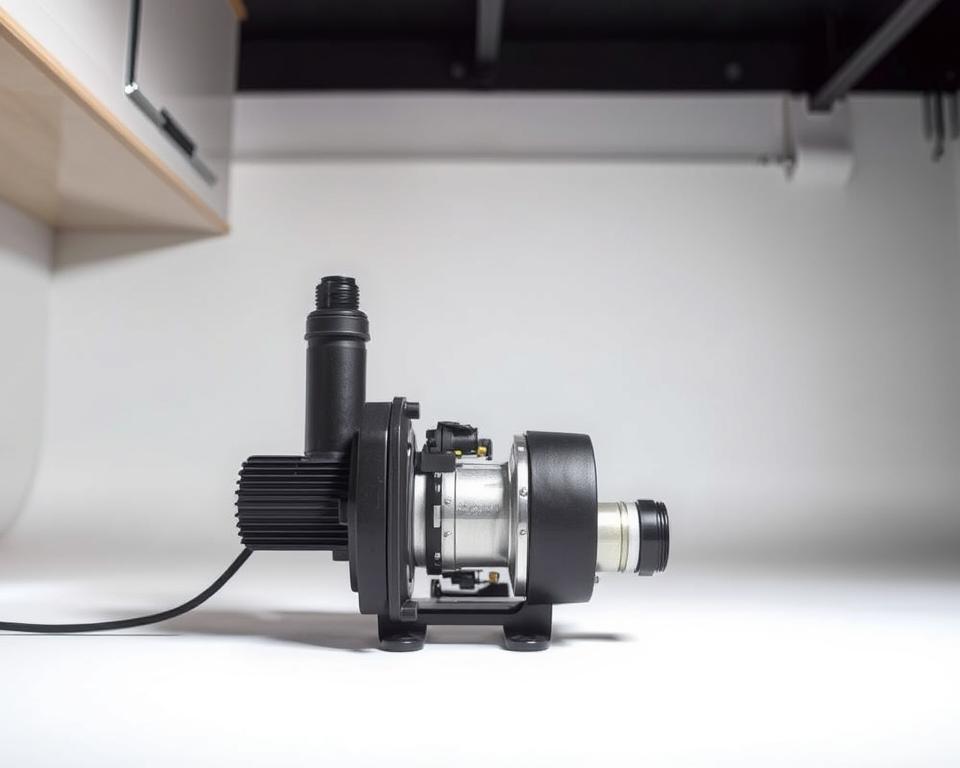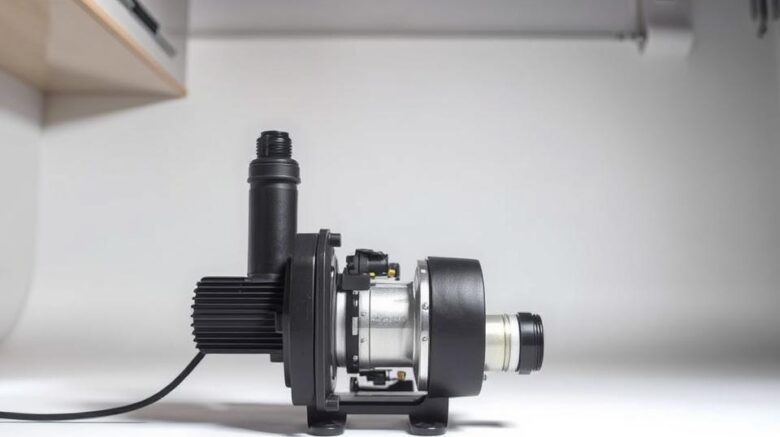RV Waste Pump: Critical Maintenance Guidelines
Is your RV’s black water pump really ready for the road, or might it create camping woes? Keeping your motorhome’s waste system in excellent order is critical. It prevents unpleasant aromas, obstructions, and expensive damage. Below are important advice to ensure your sewage pump works seamlessly, making your travels peaceful.
Getting to Know Your RV’s Plumbing System
The RV plumbing system is fundamental for any pleasant excursion. It breaks down into two main parts: the black water system and the gray water system – RV septic tank service. The black water system holds waste from the toilet, and the gray water system handles wastewater from sinks and showers.
The systems use drain lines that lead to different tanks, designed for efficient waste management. Each tank has a vent to stop gas from building up, ensuring the operation is safe and scent-neutral. Proper waste management in an RV is vital to prevent leaks or bad odors. By knowing both black and gray water tanks, RV owners can look after and manage waste better.
Grasping how your RV’s plumbing works allows early detection of issues early. Scheduled maintenance keeps journeys easier for everyone. Being proactive with your RV’s plumbing system guarantees reliability during your travels.
RV Tank Categories
Operating RVs involves understanding the different tanks. Each one is crucial to your RV’s operation, calling for regular upkeep.
The fresh water tank stores drinking water. It’s indispensable for a pleasant RV experience.
The gray water tank collects sink, shower, and other non-Septic wastewater. Handling this tank keeps your RV clean while traveling. The black water tank, on the other hand, contains toilet waste. It needs routine emptying and attentive maintenance to avoid issues.
By being familiar with the fresh, gray, and black water tanks, RV owners can better handle their systems. This planning and steady maintenance ensure smooth performance of the waste management system.
How RV Black Water Tanks Work
The working of the black water tank is crucial in RV waste management. It stores waste from the toilet via a gravity-fed system. Upon flushing, waste and water are guided toward the tank, to be stored until removal is necessary. It’s paramount to keep water levels optimized in the toilet to avoid solid waste buildup.
Understanding how RV waste tanks function can circumvent clogs and odors. Without proper care, solid waste hardens, producing blockages and emptying difficulties. Comprehensive tank flushing techniques are vital to preventing these issues, ensuring smooth functionality.
Frequent inspection of tank mechanics is advised for RV owners. This includes watching flushing methods and ensuring adequate water flow. Knowing these essentials supports efficient tank maintenance, dodging expensive fixes later.

Essential Maintenance Tips for Your RV Black Water Pump
Carrying out regular maintenance on your RV’s black water pump is imperative. Begin with choosing RV-safe toilet paper to lessen clogs and better flow. A comprehensive flush can get rid of waste and reduce bad smells. Consistently cleaning the tank helps prevent residue buildup, guaranteeing your RV fresh and comfortable.
Perform routine inspections to monitor your pump’s condition. Search for any signs of wear or damage that could affect its function. Using specialized tank treatments, like those from All in Sanitation, can markedly boost both performance and cleanliness. Following these tips can increase your pump’s life and improve your RV’s living conditions.
Use RV-Safe Toilet Paper
Caring for your RV’s black water system includes vital steps. One prime tactic is using RV-safe toilet paper for clog prevention. This purpose-made product softens quickly in water, perfect for RV sanitation systems.
RV-safe toilet paper is essential for tank maintenance. It dissolves fast, avoiding blockages from slow-decomposing materials. This improves waste disposal efficiency and keeps the plumbing free-flowing.
Opt for brands designated as RV-safe when buying toilet paper. These products reduce clog risks and prolong your black water tank‘s lifespan by preventing buildup. Steady use delivers a stress-free camping experience, without plumbing troubles.
Flush the Tank Thoroughly
Rinsing completely your black water tank is crucial for responsible waste management in your RV. To aid waste movement, make sure the toilet bowl is properly topped up before flushing. Many RVs are equipped with built-in tank flush systems to make the process more effective. For RVs without this feature, attaching tank rinsers that attach to the sewer outlet offers a good alternative.
Correct tank flushing supports waste removal and stops solid accumulations and bad smells. Adhering to this process ensures your RV stays free of odors, making your travels more enjoyable. A focus on regular and complete tank flushing will improve hygiene and the overall condition of your RV’s plumbing system.
Prevent Build-Up with Regular Cleaning
Ensuring your RV’s black water tank free of buildup is key for its peak function. Regular cleaning removes lingering waste inside the tank walls. This means flushing well with water and using specific RV tank cleaners for tough deposits.
By cleaning often, you avoid odors and reduce clog risks. A properly cleaned tank makes RVing better and helps your plumbing last longer. Include tank maintenance into your routine to guarantee smooth travels.
Using the Right Chemicals for RV Black Water Pump Maintenance
Opting for proper chemicals for RV black water pump maintenance is key for managing waste and eliminating smells. Many RV enthusiasts rely on enzyme-based RV holding tank treatments. These products feature good bacteria to degrade solids and cut down bad odors.
Avoiding harsh chemicals is critical to prevent damage to your plumbing. Such substances can corrode pipes, leading to high repair bills and diminishing your RV enjoyment. Choosing safe chemicals for odor control ensures your tank and pump’s longevity.
Maintaining your RV black water tank in excellent order improves your travel experience. Using the right holding tank treatment regularly ensures your system works well.
Routine Waste Disposal
It’s vital to empty your RV’s black water tank at the right time for smooth emptying. Aiming to do so when the tank is about two-thirds full is sensible. This sidesteps solid waste buildup, providing a cleaner emptying process.
Disposing waste at approved stations is vital for safe, eco-friendly waste handling. It’s crucial to track the tank‘s levels closely. Letting it max out can cause clogs and make disposal more difficult.
Proper timing and methods are key for hygienic waste management and can increase your plumbing’s life. Staying vigilant and maintaining your system correctly ensures a pleasant RV living experience.
Inspect and Maintain Seals
Inspecting seals around the toilet and tank is important for leak prevention. Over time, these seals might break down, leading to odors and potential harm. A comprehensive inspection will identify any wear or damage. Catching issues early makes possible quick replacement to ensure a secure connection and odor-free RV.
Maintaining a bit of water in the toilet bowl aids in preserving seal condition. This preventative measure is key in RV seal upkeep. It increases the seals’ life, preventing leaks and foul odors.
Routine seal maintenance can avoid costly fixes later. By prioritizing seal health, RV owners ensure a pleasant journey.
Long-Term Care Suggestions
Arranging professional servicing for your RV at least once a year is wise, particularly for black water tank care. This strategy supports early problem detection and maintains your plumbing system’s integrity.
When preparing your RV for storage, fully clean and empty the black water tank first. Think about antifreeze to shield against damage from remaining water during cold seasons. Doing so is important for safeguarding the system, guaranteeing it’s ready for your next adventure.
Steady reviews and preventive actions are key to lengthening your sanitation system’s life. Inspecting connections, hoses, and seals delivers smooth operations. This mindset betters your RV experience, making it enjoyable all year round.
Making sure your RV’s black water pump is well-maintained is essential for a stress-free camping journey. By observing the maintenance tips shared, you can keep your black water system working efficiently. It’s important to focus on consistent tidying, employing correct flushing methods, and opting for appropriate chemicals for waste management.
By meeting these maintenance requirements, you will avoid unpleasant odors and blockages. This also prolongs your RV plumbing system’s durability. Proactive care of the RV black water pump results in more time enjoying the outdoors, minus potential setbacks.
Don’t forget, proper upkeep is key next time you gear up for an outing. It’s not the highlight of RV ownership, yet it significantly boosts your travel experience.
